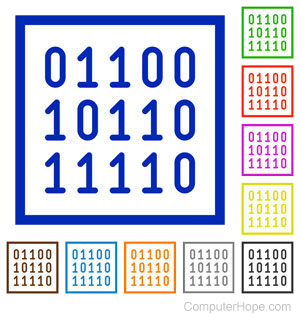Data signal

In the context of computers and digital communication, a data signal refers to a signal containing a specific set of unchanging values representing digital data. That data consists of binary code (0s and 1s) and is transmitted as electrical voltages, currents, or light pulses. The way data signals are transmitted and received depends on how the signals travel through the medium (copper wires, optical fibers, radio waves, etc.) and the communication protocols involved.
Data signals can transmit information between different components of a computer system or devices in a network. For example, different components of a computer system, like CPUs (central processing units), memory modules, and peripherals, communicate with each other using data signals. In computer networks, data signals are used for communication between devices, whether they are connected locally in a LAN (local area network) or remotely over the Internet.
Analog signal, Current, Data, Device, Digital signal, Hardware terms, Network, Optical fiber, Packet, Radio wave, Voltage, Wi-Fi
